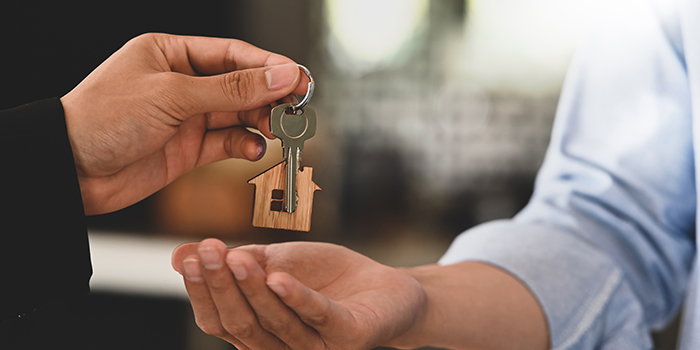
Average house prices in the UK have hit a new record for the fourth consecutive month, rising to £367,501, the latest data from Rightmove’s house price index shows.
This month has seen an increase of 2.1%, which represents the highest at this time of year since May 2014.
It also marks a national jump of £55,551 in asking prices in the two years since the housing market shut down due to the pandemic, compared to a rise of £6,218 in asking prices in the two years before the pandemic.
Rightmove says this illustrates how the frenzied market activity has led to two-year price growth in cash terms never before witnessed in over twenty years of tracking prices.
Chestertons chief executive Guy Gittins says: “Before the pandemic, the market had three years of people being concerned about the impact that Brexit would have on the economy in addition to the potential change of government on the cards. This led to many house hunters putting their property search on hold. Since the pandemic, however, market activity has completely shifted the opposite direction as buyers have become far more concerned about living in the right property.”
Meanwhile, the number of buyers contacting estate agents is 14% down on the stamp-duty-fuelled market of this time last year but is up by 31% on the more comparable market of 2019.
The number of properties available to buy is 55% down on the levels seen in 2019, with data suggesting that supply and demand look likely to remain out of kilter for at least the rest of the year.
The number of sales agreed is up by 12% in the year to date compared to 2019, but down 17% compared to the same period last year.
Rightmove says: “These numbers suggest that a lack of homes for sale rather than a lack of desire from buyers is what is dictating the pace of the market.”
“New stock is most urgently needed in the mid-market sector of two and three bedroom semi-detached homes, which are seeing the most competition from buyers.”
New Rightmove analysis also tracks first-time buyer affordability over the last 10 years and the impact of rising interest rates.
Average monthly mortgage payments of £901 for May have overtaken the average monthly rental payments £887.
The average monthly mortgage payment for a typical first-time-buyer home has increased by 13% (+£100) since December last year following four interest rate rises, although this is only 11% (+£87) higher than 10 years ago.
Rightmove says it illustrates that a decade of historically low interest rates have effectively compensated for rising house prices in terms of monthly outgoings on a mortgage.
Equivalent monthly rental payments are 40% higher than 10 years ago, with Rightmove suggesting that rents are currently rising at the fastest pace it has ever recorded.
For a person looking to buy on their own, on the national average full-time salary, borrowing 4.5 times their income, 10 years ago they would have needed to find a 25% deposit (£35,053) to afford a typical first-time buyer home, compared to today where they would need a 34% deposit (£74,402).
While these are national averages, at a national level it means that a person buying on their own on an average salary, looking to buy an average first-time buyer home, now needs a deposit 112% higher than a decade ago.
Two people buying together on the average salary should still be able to afford a first-time buyer home if they have saved a 10% deposit, although that deposit size has increased from £14,269 to £22,312, a jump of 56%.
Rightmove’s director of property science Tim Bannister says: “People may be wondering why the housing market is seemingly running in the opposite direction to the wider economy at the moment. What the data is showing us right now is that those who have the ability to do so are prioritising their home and moving, and the imbalance between supply and demand is supporting rising prices.”
“Though demand is softening from the heady levels we saw this time last year, the number of buyers enquiring is still significantly higher than during the last ‘normal’ market of 2019, while the number of homes for them to choose from remains more constrained.”
“We anticipate that the effects of the increased cost of living and rising interest rates will filter through to the market later in the year, and a combination of more supply of homes and people weighing up what they can afford will help to moderate the market,” Bannister adds.
MT Finance director of property lender Tomer Aboody explains: “With first-time buyers needing to find ever-bigger deposits as asking prices continue to rise, worryingly the market seems to be running further away from them. With continued significant demand for homes and buyers who are able, and willing, to stretch themselves to afford them, prices are still on the rise.”
“As mortgage rates increase along with the cost of living, some homeowners may potentially look to downsize in the near future, maximising their property’s value while banking the equity for savings that they can live off. This could free up larger family homes for those moving up the ladder, helping keep prices in check.”


